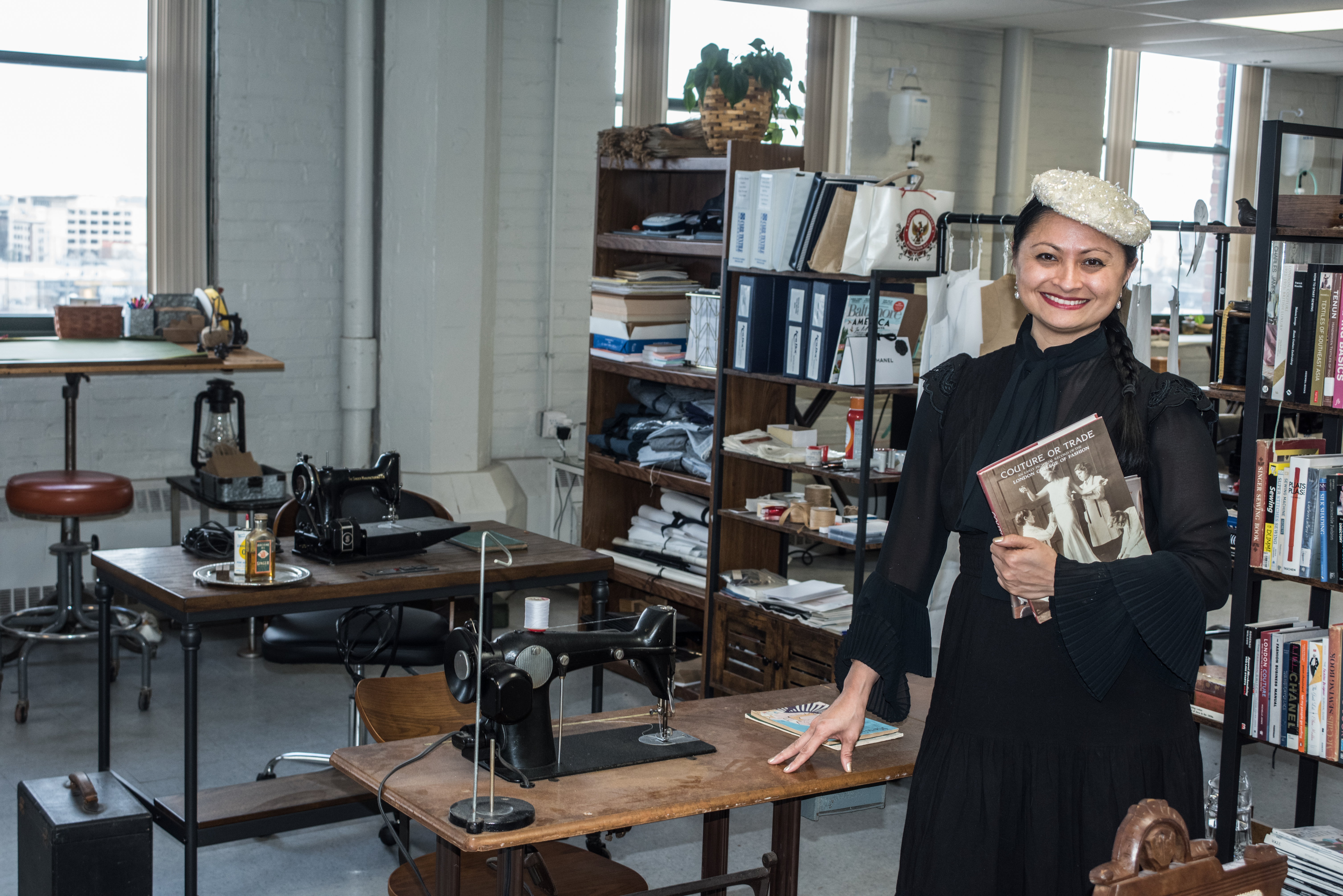
Photo credit: Pat Bourque
Stacy Stube is in a race against herself. The Baltimore native and founder of the Fashion Heritage Needle Trades Foundation has run hundreds of miles to raise awareness and investment in a once-vibrant sector of Charm City’s manufacturing footprint. An executive who has worked for some of the most iconic fashion brands around the world says that insanity is a powerful running additive, and it is proving to be an essential element in elevating Baltimore in the world of fashion production.
“I am not a passionate runner,” Stube says. “Most people are surprised by this fact. I do not run regularly as I did many years ago. But it was during my time in Bali in 2015 when I ran 300 kilometers around the island with Valentine Lily, the longest-distance runner in Indonesia. It was then that I discovered the power of insanity. What I mean is the run was crazy; we slept on the side of the road and would get chased by village dogs in the night as we circumnavigated the island for this Bali run.”
In August 2024, Lily will travel from Indonesia to Baltimore to support the Buyback Baltimore’s Needle Trades Campaign. Stube, Lily, and fashion designer Nicole Myrick will complete the ‘Bali to Baltimore Run,’ a 333-mile, 10-day marathon. It is part of a fundraising effort Stube is leading to revive the region’s homegrown manufacturing and needle trades.
“We will all be wearing Baltimore-made garments to remind the community to turn their garments inside out to see where they are investing their sewing dollars,” Stube says.
Eight months and hundreds of miles ago, Stube and the Foundation were among 20 organizations awarded grants through the TEDCO Makerspace Program. The initiative covers 11 counties and powers a variety of industries through seed investment, expansion and technological support. For Stube, a 2008 graduate of the University of Baltimore, it was an affirmation of a seemingly insane belief in the city’s textile tradition and potential.
“I have worked in the luxury fashion and manufacturing sector between the USA, Europe and Asia for over 20 years,” Stube says. “It was in 2016, when I returned to my hometown of Baltimore, that I realized that we once had a rich history in the garment industry. It was in the 1970s that the city experienced a mass exodus, and factories throughout the city made a joint decision to close operations. It became a ghost town with images you can find in abandoned America of garment factories with coats still on the production line and sewing machines left with spools of thread. Realizing this history, I set out to find remnants of the industry, and there it was in the garment loft simulation in the Baltimore Museum of Industry: old cutting tables, rows of heritage sewing machines, and the images of workers in black and white photographs staring back at me as if they were calling from the grave to say, we are not dead.”
Stube says that the TEDCO makerspace grant opportunity supported her vision of developing a Fashion Innovation Hub to be a place for founders to prototype and small batch produce pre-sold marketing fashion samples and needle trades products. Her passions include helping start-up entrepreneurs with new ideas wanting to meet niche markets, and developing programming that is not traditionally taught in fashion school. Having launched her own fashion line, Elsa Fitzgerald, she knew that Baltimore’s burgeoning fashion talent would benefit from any pathway designed to help entrepreneurs avoid the debt path of the traditional system.
“I applied for the programming TEDCO grant that focused on funding a feasibility study to not only build the programming to launch the Fashion Entrepreneur Needle Trades membership but also to pilot a dynamic space integration between makerspace and prototyping lab,” she says. “We partnered with a soft goods innovation development firm Belvidere Terrace Atelier to be our partner on the development side to work with the entrepreneurs to develop prototypes and produce in small batches. We also recruited the head production manager of the factory I used to work for to oversee the future of larger productions.”
In a city that once boasted more than 20,000 sewing machine operators, Stube envisions a 10-year plan to revitalize the needle trades industry with 33,000 innovation stitchers.
“If we were to invest in our stitchers to prepare them to be world-class product development and soft goods innovation specialists the wage could rise, and more product solutions in this sector could form as Baltimore becomes the ecosystem needed to be the Silicon Valley of the Needle Trades. Through this work, I encourage people to fall in love with fashion again and not be in such a rush for the next best thing. I want them to experience the beauty and connection we have with our clothes and the sense of community when learning to sew.”
“Often overlooked, Makerspaces provide invaluable benefits to both entrepreneurs and learners alike,” said Terry Rauh, chief finance and operations officer at TEDCO. “Just like the Fashion Heritage Needle Trades Foundation’s goal to bring knowledge and access to stitchers in Baltimore, these spaces provide entrepreneurs access to tools, technology, and knowledge, allowing for the continued growth and development of Maryland’s ecosystem.”
TEDCO’s Makerspace Program provides grants up to $100,000 and technical assistance for qualified entities looking to establish a new Makerspace, expand an existing Makerspace, or develop Makerspace programming. To view the Request for Applications and apply to the program, visit https://www.tedcomd.com/makerspace. Qualified entities may apply or reapply for financial assistance through May 15, 2024.
Source: The Daily Record